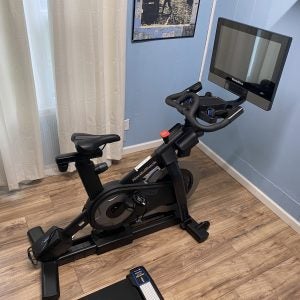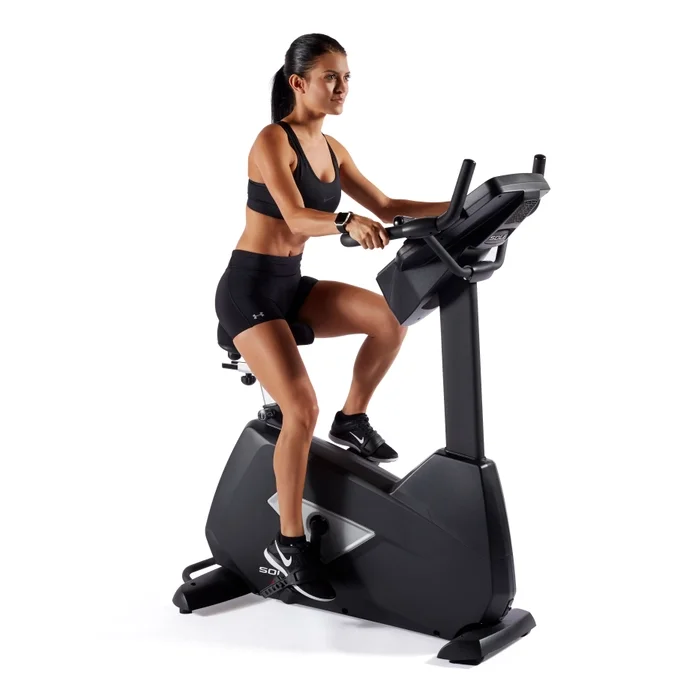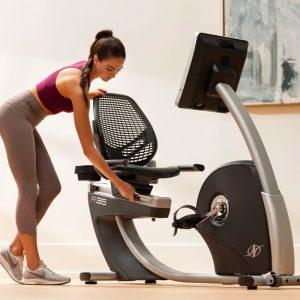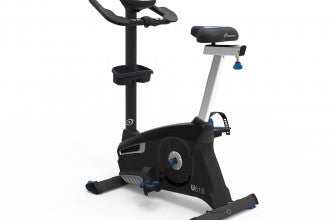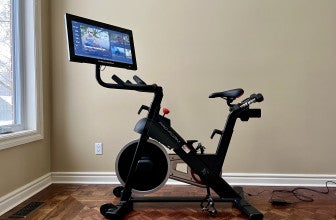Getting some form of physical exercise in every day helps boost your immune system, manage your weight, and keep your body in check. One of the best ways to get your daily cardio in is on an exercise bike. Exercise bikes are becoming increasingly popular, as they’re light, easy-to-use, and can be folded away for easy storage. Plus, you can use them whenever, wherever, no matter what the weather may be outside. And today’s machines are better than ever before. Many models feature customizable fitness programs, built-in heart rate monitors, cooling fans, and so much more. Read on for an in-depth look at the major benefits of exercise bikes.
1.) Weight Loss
If you’re looking to shed some pounds, an exercise bike is a very efficient way to burn calories. Riding a stationary bike for 30 minutes at a time can burn anywhere between 200-300 calories (depending on the users weight).
2.) Toning
Cyclists are known for having amazing legs. It makes sense: when you’re pedaling away on a bike, your quads, glutes, and calves are hard at work propelling the bike. Bonus: if you’re working that handlebar, you’re giving your upper body a workout, too.
3.) Muscle Strengthening
Stationary bikes work tirelessly to strengthen the major muscle groups that support the back, leg, thigh, and hamstring muscles. There are 2 different strokes that are used on an exercise bike: the push and the pull. Pushing down on the pedals is a great way to strengthen the quads, while pulling up is a great way to strengthen the hamstrings. Bonus: exercise bikes cause less stress on the knees than outdoor bikes since you’re riding on even terrain.
4.) Ease on the Joints
Running, jogging, and many team sports and classes can be hard on your joints because of the amount of impact involved. An exercise bike is an exceptional way to get your heart rate up without putting excess stress on those precious joints. In fact, a bike puts even less stress on the back, hips, knees and ankles than walking. Proper form on the bike means your knee should bend just slightly on the down pedal stroke. If it’s too bent or too straight, you’ll need to adjust that saddle.
5.) Convenience
The best part about an exercise bike is that you can use it whenever, wherever. If the weather outside is too hot, too cold, or too rainy, who cares? You can keep a recumbent bike in your home office, bedroom, or patio, giving you the chance to work out after dinner, before breakfast, or during a break at work. Plus, when you’re on your machine, you can catch up on your favorite TV shows, read the newspaper or a book, or keep an eye on your little ones.
6.) Cardio
Cardio exercise works to lower high blood pressure, regulate blood sugar, and prevent heart attacks. Not to mention, it’s a great way to lose weight. Hopping on an exercise bike is an exceptional way to work your body because it will help your heart become more efficient at pumping blood. It also works hard to increase the good cholesterol and lower the bad cholesterol in your body. To put it simply, riding an exercise bike for 30 minutes a day for a handful of times per week can extend your life.
7.) Heart and Health Benefits
Riding an exercise bike can strengthen your heart and lungs, while also improving your body’s ability to utilize oxygen. Using a stationary bike regularly can also help regulate high blood pressure and improve respiratory function. For best results, it’s recommended that you exercise five days a week for 30 minutes.
8.) Energy-Boosting
According to a study published in the journal Psychotherapy and Psychosomatics, bike riding improved energy levels by 20 percent and decreased fatigue by 65 percent. Why, you ask? It’s simple: cycling triggers your brain to release the neurotransmitter dopamine, which is linked to energy.
9.) Allows for Interval Training
Interval training is a proven effective method to torch more calories, increase efficiency, and improve overall aerobic performance. When using an exercise bike, you eliminate a lot of the hurdles on the road like uneven terrain that can limit peak intensities and stoplights that break the flow.
10.) Safer Than Road Biking
With road biking come inherent dangers. From T-junctions and roundabouts to parked vehicles, potholes, impaired drivers, and so much more, defensive riding is critical. However, an exercise bike keeps you safe in the comfort of your home without all the added hazards.
Now that you’re familiar with the benefits of exercise machines, it’s time to find one that works for you and your lifestyle. To ensure you’re choosing the best bike for you, ask yourself the following questions:
- Do you want an upright bike, an indoor cycle or a recumbent bike (this type of bike allows you to pedal from a more reclined position)?
- Do you need something smaller that folds up, or do you have room for something with all the bells and whistles?
- What do you want to spend?
- How often are you planning on using it?
- What will you use the bike for? What is your primary goal?
To make your workout work for you, it’s important to go to the next level. We suggest finding a friend to exercise with – this will hold you accountable for your workouts and ensure you stick with a routine. We also recommend setting your intention before you get on that bike. Whether it’s strength one day, or recovery the next, it’s great to know what you’re working for. Lastly, it’s important to change it up every once in awhile. With so many fun and innovative videos on the market, you can cycle through the city one day and France the next with a click of a button.
Our Top Rated Home Exercise Bikes
NordicTrack Commercial S22i
The S22i is NordicTrack’s response to the Peloton revolution. It allows you to bring the energizing atmosphere of a studio spin bike class home.
Sole LCB Upright Bike
The Sole LCB Light Commercial Bike is a great basic for shared workout spaces and adds a bit of luxury to home gyms.
